Вы здесь
Altai Botanical Garden in Ridder.
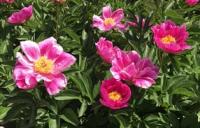
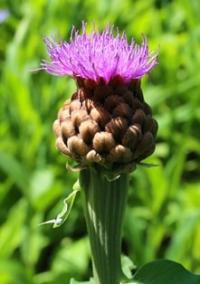
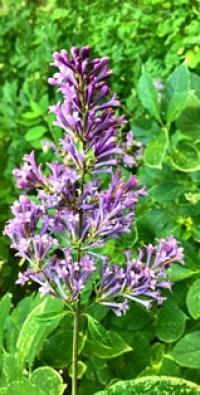

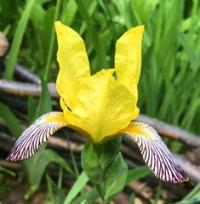
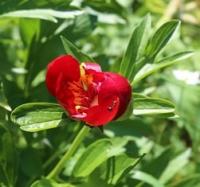
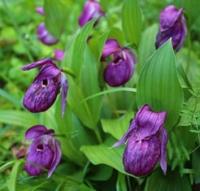

Flower Tours in Altai Botanical Garden in Ridder.
“Why do you go away? So that you can come back. So that you can see the place you came from with new eyes and extra colors. And the people there see you differently, too. Coming back to where you started is not the same as never leaving”
Terry Pratchett. “A Hat Full of Sky”.
Visit to Altai Botanical Garden in Ridder.
Altai Botanical Garden - Botanical Garden of the Committee of Science of the Ministry of Education and Science of Kazakhstan. Located in the city of Ridder. The initiator and creator of the garden is Peter Alexandrovich Ermakov.
In 1933, an expedition of the All-Union Institute of Feed led by Peter Ermakov explored the flora of eastern Kazakhstan. Returning from the expedition, P.A. On January 7, 1934, at a meeting of the presidium of the Kazakhstan branch of the USSR Academy of Sciences (KFAN), the question "On the organization of a botanical garden" was considered.
The idea of creating a botanical garden was approved by the scientists of the Presidium, thanks were expressed to Peter Ermakov. He was approved by the head of the Altai Botanical Garden. The meeting approved the program of work of the garden, but legally the beginning of the organization of the garden should be considered 1935.
Peter Ermakov picked up a plot of 80 hectares on the southeastern outskirts of the city of Ridder, including arable land 23.16 hectares, pasture rocky 25.32 hectares, pasture with shrubs 28.13 hectares, forests 1.37 hectares, uncomfortable lands 2, 64 ha.
The allocation of these lands for the organization of the botanical garden was approved by the decision of the Ridder City Council of December 9, 1935. When choosing a place for the garden, its protection by Sokolnaya hills from industrial gases, its diverse relief, soils typical of Altai and the availability of water resources were taken into account.
The garden is located on the southern spurs of the large Sokolny hills on the eastern edge of the wide Ridder Valley, in the floodplain of the Bystrukha River. In the 1935 season, the first work was carried out to collect herbarium and seeds, in the autumn of 1935, the site was cleared and plowed.
n the spring of 1936, the Altai Botanical Garden first began sowing and planting of woody, shrubby, fruit, berry, vegetable and fodder plants. By a decision of the Presidium of the Ridder City Council on January 8, 1937, an additional 40 hectares of land were allotted to the botanical garden.
In 1935, the Altai Botanical Garden began its work with four people: the head of the botanical garden - one, trainees - two, the watchman - one. The Decree of the Council of People's Commissars of the Kazakh SSR dated December 6, 1944 No. 689 "On the structure of the KazFAN SSR for 1945" approved the structure of the Kazakh FAN SSR for 1945 and the staffing of institutes of the Kazakh FAN USSR. Altai Botanical Garden was transferred to the Institute of Botany on an independent balance sheet.
By the resolution of the general meeting of the Academy of Sciences of the Kazakh SSR dated January 27, 1965 No. 5 “On the Organization of the Main Botanical Garden of the Academy of Sciences of the Kazakh SSR”, the “Main Botanical Garden of the Academy of Sciences of the Kazakh SSR” was organized on the basis of the Alma-Ata Botanical Garden and the Institute of Botany research institute.
The Altai Botanical Garden was subordinated to the Main Botanical Garden and renamed the Altai Branch of the Main Botanical Garden of the Academy of Sciences of the Kazakh SSR.
In 1995, the registration and approval of land use boundaries of the Altai Botanical Garden was carried out. After clarifying the boundaries of land use by decision of the head of the Leninogorsk city administration of July 10, 1995, Altai Botanical Garden assigned 154.2 hectares (Act on Permanent Land Use No. 398 of September 15, 1995).
Peter Alexandrovich Ermakov died on May 13, 1944 at the workplace and was buried in the Altai Botanical Garden. On February 16, 1995, the eighth session of the Leninogorsk city maslikhat-assembly of deputies decided to confer the title of “Honorary Citizen of the City of Leninogorsk” for Pyotr Aleksandrovich Ermakov.
The street where the office of the Altai Botanical Garden is located is named after Ermakov. In 1999, by order of the Ministry of Science-Academy of Sciences of the Republic of Kazakhstan No. 1 "On the implementation of the Decree of the Government of the Republic of Kazakhstan dated December 25, 1998 No. 1335" Issues of institutions-administrators of programs financed from the state budget "research institutes were transformed into Republican state enterprises In the appendix to the order of the Ministry of Science-Academy of Sciences of the Republic of Kazakhstan dated January 26, 1999 No. 13 “On the re-registration of transformable institutions” subject to re-registration in the donation enterprises under No. 104 indicated the Altai Botanical Garden.
By the Decree of the Government of the Republic of Kazakhstan dated July 5, 2000 No. 1018, by the order of the Ministry of Education and Science dated August 2, 2000 No. 807 of the Altai Botanical Garden RSE, it was transformed into an independent enterprise on the basis of the rights of a research institute.
In 2005, it was included in the official state list of objects of Specially Protected Natural Territories of Republican Significance. Now the Republican State Enterprise on the right of economic management "Altai Botanical Garden" of the Committee of Science of the Ministry of Education and Science of the Republic of Kazakhstan.
Currently, the territory of the botanical garden is 154.2 hectares, located on the southeastern outskirts of Ridder and has a diverse relief: from the floodplain of the Bystrukha River to the rocky slopes of the Ivanovsky Ridge.
The structure of the garden consists of departments of floriculture, natural flora, horticulture, arboretum and reproduction nursery. Unique collection fund of living, plants of the Altai Botanical Garden, which is represented by 3745 species, forms, varieties, samples; of these, 619 biogroups grow in the arboretum, the collection of fruit and berry crops consists of 342 species, forms, varieties, flower-decorative plants are represented by 2220 taxa, of which 1445 species, forms, specimens are representatives of the natural flora, 775 are foreign species of cultural flora, medicinal - 169 species, 340 specimens, a collection of rare and endangered plants - 90 species, 286 specimens.
It covers an area of 51.5 hectares on the slopes of Mount Belkin. The protected area of the Altai Botanical Garden is a natural ecological system, the plant phytocenosis of which is formed by 400 species of higher flowering plants.
In the conservation area, 17.5 hectares are occupied by the region’s typical natural plant communities and 34 hectares are occupied by natural ecological systems, where 16 species of rare plants grow. It includes experimental plots with collection of scientific funds of living plants and introduction nurseries for propagation, cultivation and selection of plants. The total area is 30.55 ha.
Exposition area of the Altai Botanical Garden.
The exposition of natural flora is 4 hectares, the introduction seed nursery is 0.03 hectares. Exposition of woody and shrubby plants (arboretum) - 12 ha; introduction nursery - 0.5 ha. Exposition of flower-decorative perennial - 2 hectares; introduction nursery - 0.02 ha.
Exposition of fruit crops - 12 ha; introduction nursery - 0.1 ha. Sites of the scientific zone allocated for excursion services are on display of natural flora (1.5 hectares), tree-shrub plants - 3 hectares, flower-decorative perennials - 1 hectare. Only 5.5 hectares.
The relief of the botanical garden is quite diverse. In the south-west it is represented by alternating large (rock surface) with gentle slopes that abruptly break off to the floodplain of the Bystrukha River. The lowest floodplain stretches a narrow strip along the river bed and is represented by its turfy outbursts.
The absolute height of the garden is 770 - 860 meters above sea level. Soils in the botanical garden include several varieties and go well with relief. On the gentle slopes there are chernozem-like silty loams (total humus content of 6.45%), and on steep slopes - chernozem-like cartilaginous loams (5.17% humus content) and undeveloped loam (4.08%).
Soils are quite rich in nitrogen (127 kg / ha), but lack phosphorus. Location in the center of Eurasia determines the sharply continental climate with high daily and seasonal temperature fluctuations. The limiting factor in the introduction of plants in the Altai Botanical Garden are sharp changes in temperature and humidity during the year, season and day.
The peculiarity of the climatic conditions of the region affects the seasonal rhythm of the development of plants of regional taxa. Winter is long, about 5-6 months with an average January temperature of −12.9 ° C and an absolute minimum of 46 - 54 ° C.
Summer is short and wet. The average July temperature is + 16.8 ° C with an absolute maximum of + 41.5 ° C. The mountainous terrain softens low temperatures in winter and high in summer, but is the cause of early and late frosts, reducing the duration of the frost-free period.
According to the Leninogorsk weather station, the frost-free period is 51-139 days. Steady air temperature above 5 ° - 169 days, and above 10 ° - 121 days. The sum of effective temperatures above + 10 ° C is 1850 °, above - + 15 ° C - 1850 ° C, above + 25 ° C −1225 ° C.
The average annual rainfall ranges from 432 to 937 mm with a summer maximum. The vegetation of the garden is mainly represented by a meadow-steppe character, however, the steppe elements here are weakly expressed and are mainly confined to the slopes of southern expositions.
Steep and stony slopes are more steppe and their aspects change several times during the summer. In the second half of summer, the species composition of flowering plants pales, and by autumn the slopes become gray.
Gentle slopes and lowlands are occupied by a dense grass stand of a grass-mixed composition with the participation of both meadow-steppe and meadow-forest elements depending on the exposure. The following expositions are presented in the structure of the Altai Botanical Garden: fruit garden, natural flora, arboretum, floriculture.
Conducting fundamental and applied research in the field of phyto-introduction and botany to gain new knowledge about the value of plants, enriching the gene pool, developing reproduction technologies for promising introducers, organizing and implementing the regime of “Specially Protected Natural Territory of Republican Importance” in accordance with the legislation of the Republic of Kazakhstan.
The main task of scientists of the Alatai Botanical Garden is to develop theoretical and practical issues of the distribution and acclimatization of plants, to study the bioecological features of their growth and development in adverse soil and climatic conditions.
Creation and preservation of plant collections, protection of the gene pool; study in culture and development of methods of cultivation of the most economically valuable species and forms of medicinal, food, ornamental plants of natural and regional flora; development of the scientific basis for the protection and reproduction of rare and endangered plants by the method of introduction and reintroduction; conducting teaching and research work in the field of ecology, biology, nature conservation, crop production, decorative gardening and landscape architecture.
Recommendations are being developed on their reproduction and care, introduction of species in various sectors of the national economy, the creation of scientific foundations for the cultivation of gardens and parks, and the provision of practical assistance in landscaping settlements in the region.
There are about 4,000 species of higher plants in the Altai Botanical Garden (of which 2,000 species belong to the local flora).
Altai Botanical Garden is located at: 071300, Ridder, st. Ermakova, 1.
Authority:
https://ru.wikipedia.org
Photos
Alexander Petrov.







